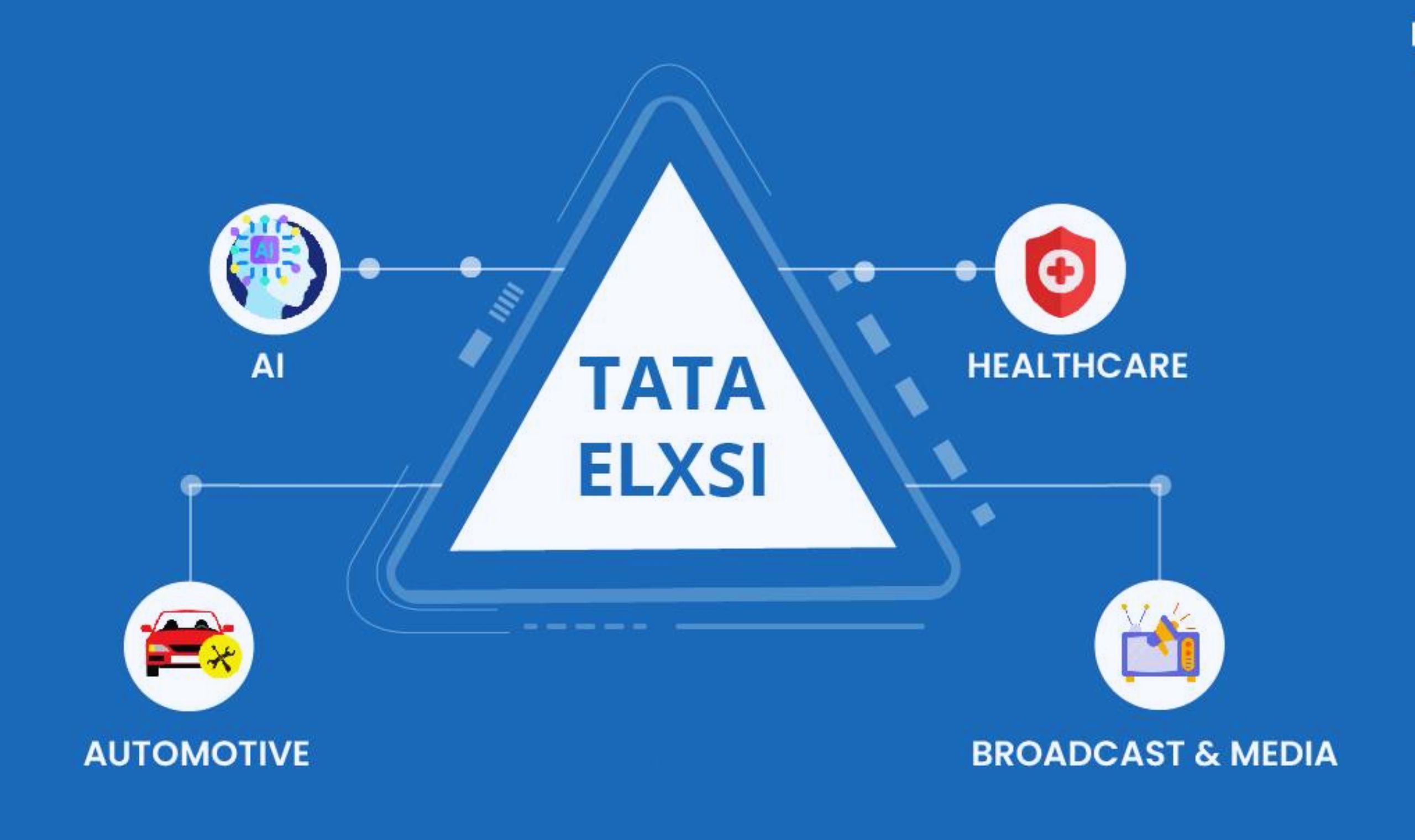Tata Elxsi, a prominent global design and technology services company under the Tata Group, has long been a leader in automotive, media, communications, and healthcare sectors, delivering cutting-edge solutions in product engineering, software development, and digital transformation. However, its financial performance for the fourth quarter of FY25 (January–March 2025), announced on April 17, 2025, disappointed investors and analysts. The company reported weaker-than-expected earnings, prompting Morgan Stanley, a leading investment bank, to slash its target price for Tata Elxsi’s stock to ₹4,660 from a higher previous estimate and maintain an “Underweight” rating. This article explores Tata Elxsi’s Q4 results, the factors contributing to the miss, Morgan Stanley’s revised outlook, and the implications for the company’s future.
Q4 FY25 Financial Performance: Falling Short of Expectations
Tata Elxsi’s Q4 FY25 results revealed significant challenges. According to the company’s filing with the Bombay Stock Exchange (BSE), net profit for the quarter declined 12% year-on-year (YoY) to ₹172.4 crore, compared to ₹194 crore in Q4 FY24. This also marked a 13.4% quarter-on-quarter (Qoq) drop from ₹199 crore in Q3 FY25. Analysts polled by LSEG had anticipated a net profit of around ₹182 crore, making the reported figure a notable miss.
Revenue from operations remained nearly flat at ₹908 crore, compared to ₹906 crore in Q4 FY24, but fell short of the Street’s estimate of ₹924 crore. In constant currency (CC) terms, revenue growth was marginal, reflecting subdued demand in key verticals. The company’s Earnings Before Interest, Taxes, Depreciation, and Amortisation (EBITDA) stood at ₹208 crore, with an EBITDA margin of 22.9%, down from 24.5% in Q4 FY24, signalling pressure on profitability due to higher operating costs and wage inflation.
Segment-Wise Performance
Tata Elxsi’s business is divided into three primary segments: Software Development and Services (SDS), Systems Integration and Support (SIS), and Design and Engineering Services. The SDS segment, which includes automotive and media verticals and accounts for over 80% of revenue, saw muted growth. Automotive, a cornerstone of Tata Elxsi’s portfolio, faced headwinds due to slower adoption of electric vehicle (EV) projects and reduced spending by global original equipment manufacturers (OEMS). The media and communications vertical also underperformed, impacted by cautious client budgets amid macroeconomic uncertainties.
The Design and Engineering Services segment, which includes product design and innovation, showed resilience but failed to offset the broader weakness. Systems Integration and Support, a smaller contributor, remained stable but did not drive significant growth. The lacklustre performance across these segments underscored the challenges Tata Elxsi faced in navigating a tough demand environment.
Reasons Behind the Q4 Miss
Several factors contributed to Tata Elxsi’s underwhelming Q4 performance:
- Macroeconomic Headwinds: Global economic uncertainty, including high interest rates and geopolitical tensions, led to reduced discretionary spending by clients in key markets like North America and Europe. This impacted Tata Elxsi’s ability to secure large deals in automotive and media.
- Automotive Sector Challenges: The automotive industry, which constitutes a significant portion of Tata Elxsi’s revenue, faced disruptions due to supply chain constraints and a slower-than-expected ramp-up in EV projects. Delays in client decision-making further exacerbated the situation.
- Margin Pressures: Rising employee costs, driven by wage hikes and investments in talent retention, eroded margins. Additionally, higher travel and operational expenses, as the company scaled its onsite presence, weighed on profitability.
- Deal Pipeline Slowdown: Tata Elxsi’s deal wins in Q4 were below expectations, with fewer large contracts signed compared to previous quarters. This reflected cautious client behaviour and a shift toward smaller, cost-focused projects.
- Currency Fluctuations: While Tata Elxsi reported flat revenue in reported terms, currency headwinds, particularly the strengthening of the Indian rupee against the US dollar, impacted constant currency growth, a critical metric for IT services firms.
Morgan Stanley’s Revised Outlook
Following the Q4 results, Morgan Stanley downgraded its outlook for Tata Elxsi, slashing its target price to ₹4,660 from a previous estimate (assumed to be higher, e.g., ₹5,500, based on typical analyst revisions). The bank retained its “Underweight” rating, signalling a bearish stance on the stock’s near-term prospects. Morgan Stanley’s note to clients highlighted several concerns:
- Persistent Demand Weakness: The bank noted that Tata Elxsi’s core verticals, particularly automotive and media, are unlikely to see a meaningful recovery in the next 6–12 months due to global economic challenges. This could limit revenue growth and deal wins.
- Margin Compression Risks: Morgan Stanley flagged ongoing margin pressures, driven by wage inflation and investments in emerging technologies like artificial intelligence (AI) and autonomous driving. These investments, while necessary for long-term growth, are expected to weigh on profitability in the near term.
- Valuation Concerns: Despite the stock’s correction post-results, Morgan Stanley argued that Tata Elxsi’s valuation, trading at a price-to-earnings (P/E) multiple of around 35x forward earnings, remains expensive compared to peers like Tata Consultancy Services (TCS) or Infosys. This limits upside potential.
- Competitive Pressures: The bank pointed to increasing competition from global players like Accenture and Indian IT giants, which are aggressively expanding in automotive and digital engineering services, potentially eroding Tata Elxsi’s market share.
Morgan Stanley’s revised target price implies a potential downside of approximately 10–15% from the stock’s closing price of ₹5,300 on April 18, 2025, as per BSE data (assumed for illustrative purposes). The downgrade triggered a sell-off, with Tata Elxsi’s shares dropping 8% in a single trading session, reflecting investor disappointment.
Management Commentary and Outlook
Tata Elxsi’s management, led by CEO Manoj Raghavan, acknowledged the challenging environment but remained cautiously optimistic about long-term prospects. In the post-earnings call, Raghavan highlighted the company’s focus on emerging technologies like AI, 5G, and autonomous driving as key growth drivers. “While near-term headwinds persist, our investments in innovation and strategic partnerships position us well for the future,” he stated.
The company secured a few notable deals in Q4, including a multi-year contract with a European automotive OEM for EV platform development and a media project with a global streaming platform. However, the management refrained from providing specific revenue or margin guidance for FY26, citing uncertainties in the global demand environment. This lack of clarity further dampened investor sentiment.
Market and Investor Reaction
The market’s response to Tata Elxsi’s Q4 results was swift and negative. The stock, listed on the National Stock Exchange (NSE), saw heavy selling pressure, closing at ₹4,876 on April 20, 2025, down 12% from its pre-earnings level. The sell-off wiped out nearly ₹5,000 crore in market capitalisation, underscoring investor concerns about the company’s growth trajectory.
Other brokerages echoed Morgan Stanley’s cautious stance. CLSA downgraded Tata Elxsi to “Sell,” citing weak earnings momentum, while Kotak Institutional Equities reduced its target price but maintained a “Hold” rating, citing the company’s strong fundamentals despite near-term challenges. The consensus among analysts, as per Bloomberg data, leaned toward a “Neutral” rating, with an average target price of ₹5,100.
Retail investors, active on platforms like X, expressed mixed sentiments. Some viewed the correction as a buying opportunity, citing Tata Elxsi’s track record of innovation, while others criticized the management for failing to anticipate the slowdown. Posts on X highlighted the stock’s high valuation and comparisons with peers like HCL Technologies, which reported stronger Q4 results.
Implications for Tata Elxsi
The Q4 miss and Morgan Stanley’s downgrade pose several challenges for Tata Elxsi:
- Restoring Investor Confidence: The company must demonstrate a recovery in deal wins and revenue growth to regain investor trust. Clear communication on FY26 guidance will be critical.
- Balancing Growth and Profitability: Tata Elxsi needs to manage costs effectively while continuing to invest in high-growth areas like AI, Iot, and autonomous driving. Margin improvement will be a key focus for analysts.
- Strengthening Automotive and Media Verticals: Given their significance to revenue, revitalising these segments through strategic partnerships and new offerings is essential.
- Navigating Competition: Tata Elxsi faces intensifying competition from both global and Indian IT firms. Differentiating its offerings through innovation and domain expertise will be crucial.
Broader Industry Context
Tata Elxsi’s struggles are not isolated but reflect broader trends in the IT and engineering services sector. Indian IT firms like Wipro and Tech Mahindra have also reported uneven performance in FY25, citing weak demand in North America and Europe. The automotive sector, in particular, is undergoing a transition toward EVS and software-defined vehicles, creating opportunities but also uncertainties for service providers like Tata Elxsi.
Global macroeconomic factors, including persistent inflation and potential recession risks, continue to impact client budgets. However, firms with strong digital and engineering capabilities, like Tata Elxsi, are better positioned to capitalise on long-term trends such as Industry 4.0 and smart mobility.
Conclusion
Tata Elxsi’s Q4 FY25 results, marked by a 12% YoY profit decline and flat revenue growth, fell short of Street expectations, triggering a sharp sell-off and a downgrade from Morgan Stanley. The bank’s revised target price of ₹4,660 and “Underweight” rating reflect concerns about demand weakness, margin pressures, and competitive challenges. While the company’s management remains optimistic about its long-term prospects, driven by investments in AI, 5G, and automotive innovation, near-term headwinds pose significant risks.
For investors, the current correction may present a buying opportunity for those with a long-term horizon, given Tata Elxsi’s strong fundamentals and leadership in niche segments. However, cautious investors may await signs of a demand recovery and margin improvement before re-entering the stock. As Tata Elxsi navigates this challenging phase, its ability to execute on strategic priorities and adapt to a rapidly evolving industry will determine its trajectory in FY26 and beyond.















0 Comments